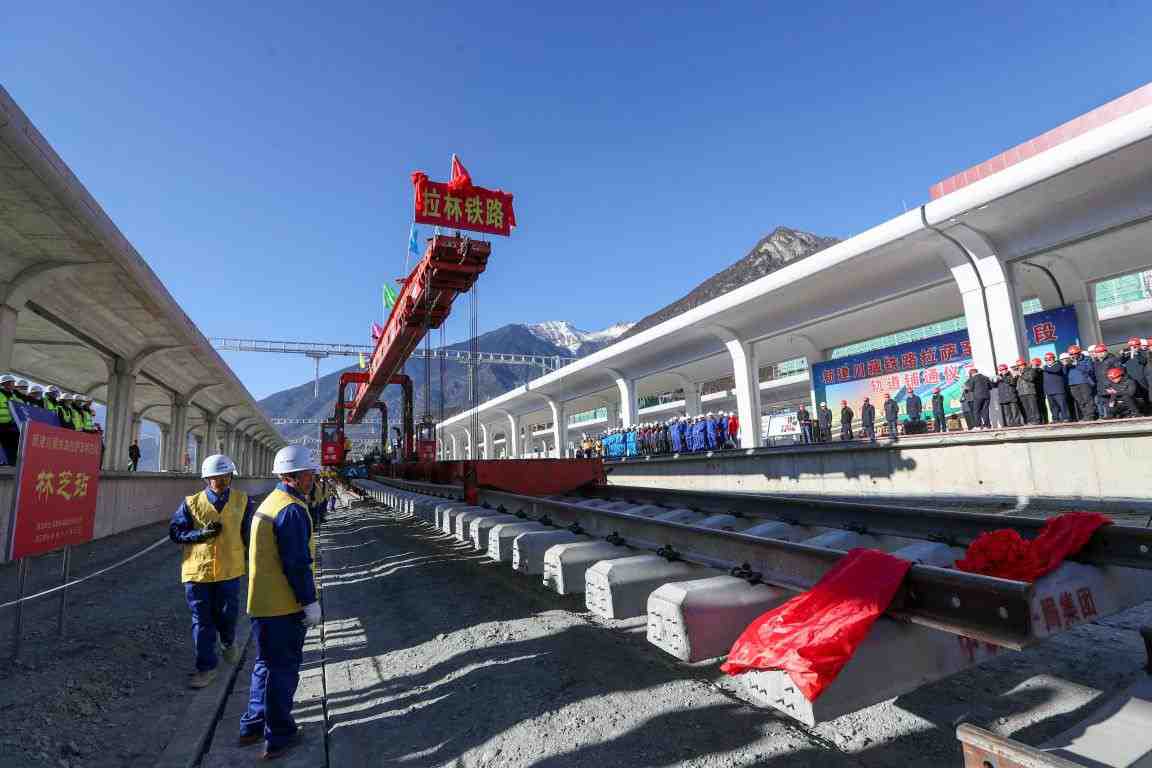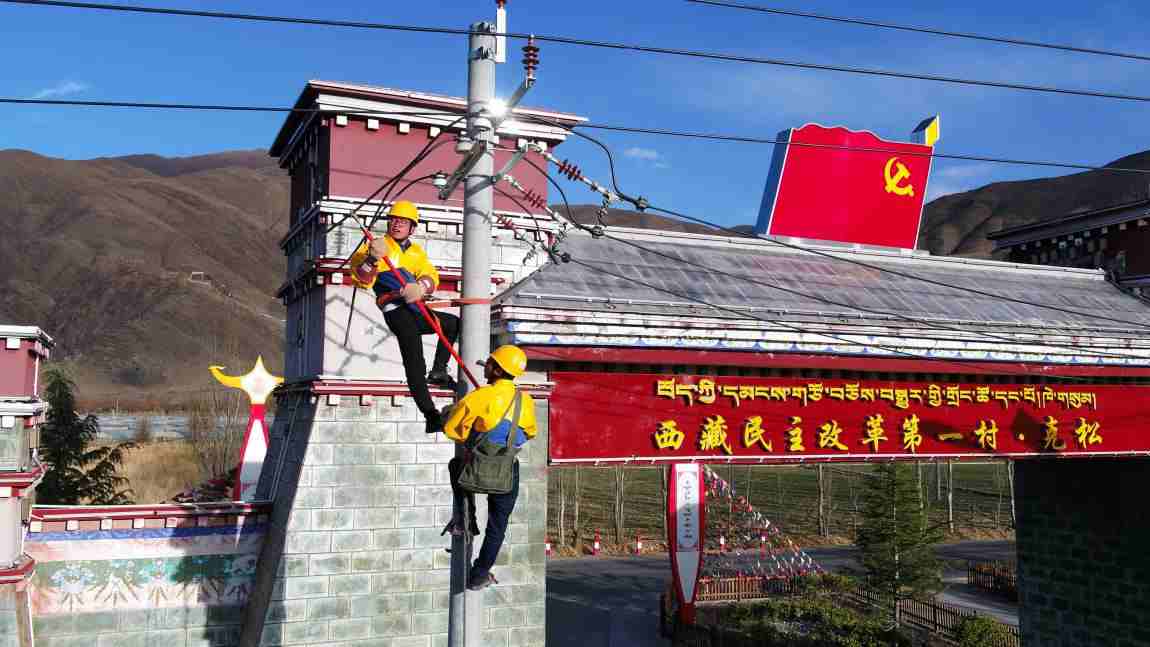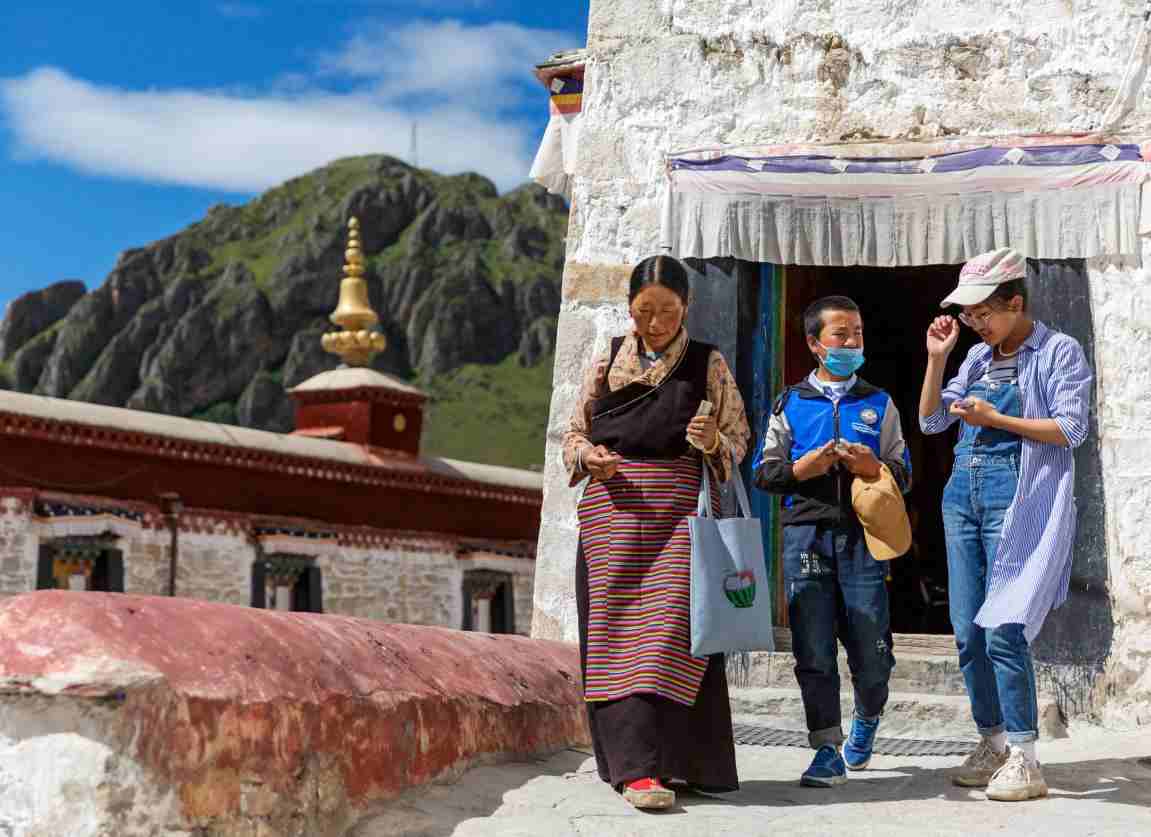China’s Tibet embraces new chapter in development in new era
In the Ngokjetang neighborhood in Lhasa city, capital of southwest China’s Tibet autonomous region, where streets are neat and tidy, stores see booming business, and good governance and social order are maintained, residents of various ethnic groups, including the Tibetans, the Han and Hui people, enjoy close ties of kinship, and always gather together when celebrating Spring Festival and the Tibetan New Year.
Thanks to the unremitting efforts of people of all ethnic groups in Tibet and with the vigorous support of the whole country, the region has bid farewell to poverty that had plagued it for over a thousand years and embraced a well-off life.
A brand new Tibet, which enjoys all-round social progress, economic and cultural prosperity, and a sound eco-environment, and sees its citizens lead better lives, has taken shape.

Photo taken on August 28, 2020, shows a freight train running on the Qinghai-Tibet Railway. (Photo by Peng Huan/People’s Daily Online)
Due to historical and natural factors, Tibet used to be a region with the highest poverty incidence and severest level of poverty in China, where the cost of poverty eradication was the highest and the difficulty greatest in the country.
After painstaking and untiring efforts made by the Chinese government and the local people for many years, all the 628,000 registered poor people and 74 designated poor counties in Tibet have shaken off poverty, marking the end of absolute poverty in Tibet for the first time in history.
Last year, the average per capita disposable income of rural residents in Tibet reached 14,598 yuan (about $2,279), up 12.7 percent over the previous year while representing double-digit growth for the 18th consecutive year.
Today, Tibet spends more than 70 percent of its fiscal revenue on safeguarding and improving people’s livelihood every year, continuously enhancing local people’s sense of gain, happiness, and security.
On July 1, 2006, the Qinghai-Tibet Railway opened to traffic. It is the first railway connecting Tibet with other parts of China.

The track-laying work of the Lhasa-Nyingchi Railway in southwest China’s Tibet autonomous region is completed by construction workers with China Railway 11 Bureau Group Corporation, Dec. 31, 2020. (Photo by Xu Yunhua/People’s Daily Online)
After the railway opened to traffic, the places that used to take a day to get to can now be reached in two to three hours by train, according to Yuru, head of the villagers’ committee of a village in Amdo county, Nagqu of Tibet, who travels a lot between Amdo county and Nagqu and Lhasa.
“Whenever new commodities are launched, we can get them soon,” Yuru said.
As of December 2020, the Qinghai-Tibet Railway had accumulatively carried nearly 64.7 million tons of goods in and out of Tibet, and transported a total of about 28.7 million passengers to and from the region.
The Lhasa-Nyingchi Railway, the first electrified railroad in Tibet, is slated to begin service on June 30. And China’s independently-developed Fuxing high-speed Electric Multiple Unit (EMU) trains powered by both internal-combustion and electricity are expected to run along the railway.
The Lhasa-Shigatse expressway under construction in Tibet, which connects Lhasa and Shigatse city of Tibet and is expected to stretch 166.98 kilometers, will cut the driving time between Lhasa and Shigatse to less than three hours from nearly six hours after it is completed.

Local electricity workers install a new transformer without cutting off the electricity at Kesong village, Shannan city, southwest China’s Tibet autonomous region, with the help of technicians sent from east China’s Anhui province to aid Tibet, Dec. 4, 2019. (Photo by Ma Yong/People’s Daily Online)
From 2016 to 2020, Tibet’s total length of highways in service rose to 118,800 kilometers, an average annual growth of 8,100 kilometers, according to the head of Tibet’s department of transportation.
Apart from railways and highways, Tibet has also seen improvement in its electricity network. So far, four major electricity transmission and transformation projects have been built for Tibet, including a power grid interconnection project in Ngari prefecture of the region, which was put into operation in December 2020 and has ensured safe and reliable electricity for 380,000 farmers and herdsmen in 16 counties along the route.
As its infrastructure has been continuously improved, Tibet has attracted a lot of companies engaging in cloud computing, big data, artificial intelligence (AI), and other new industries.

Photo taken in August 2020 shows Tibetan people at the Drepung Monastery, the largest monastery of Tibetan Buddhism’s Gelug Sect, in Lhasa, southwest China’s Tibet autonomous region. (Photo by Tang Mingdeng/People’s Daily Online)
“The Tibetan plateau has natural advantages for developing big data industry, such as the clean and low-sulphur air, cold climate, and cheap electricity,” said Jiang Ning, president of Ningsuan, a Tibet-based big data service provider.
With an investment of 11.8 billion yuan, the company hopes to build a cloud computing data center that can accommodate 70,000 equipment cabinets in Tibet, according to Jiang, who disclosed that once completed, the data center will bring in an annual operating income of about 10 billion yuan.
Photos
Related Stories
- Tibet's human rights make comprehensive progress: experts
- One man's contributions to change in China's Tibet
- Photo and art exhibition on Tibet opens in Beijing
- Beijing launches first tourist train to Tibet
- Tibet witnesses historic changes over past seven decades
- Xi Jinping on development of Tibet
- Interview: Inheriting traditional Tibetan culture not only promotes regional revitalization, says Japanese director
- In numbers: Tibet over past 70 years
- To write new chapters of development in Tibet for a new era
- Photo and art exhibition on Tibet opens in Beijing
Copyright © 2021 People's Daily Online. All Rights Reserved.










